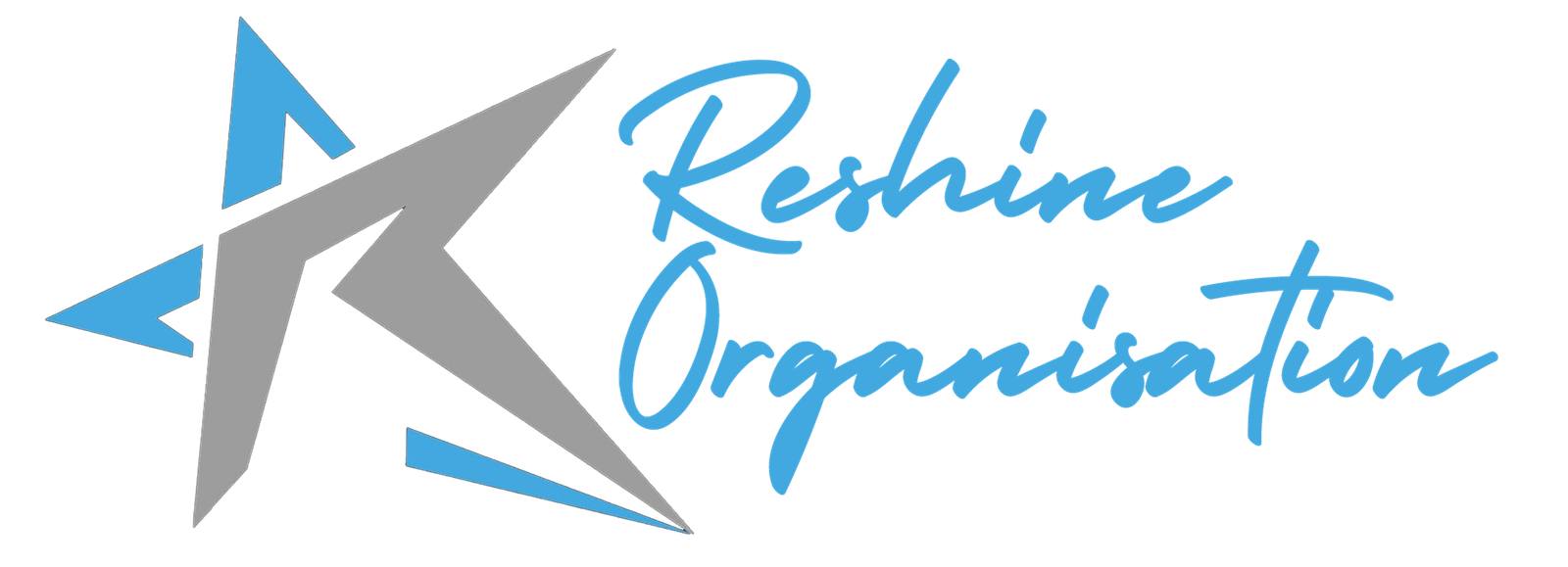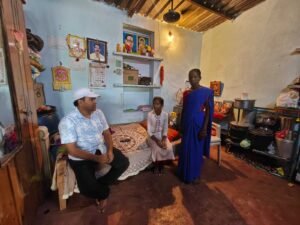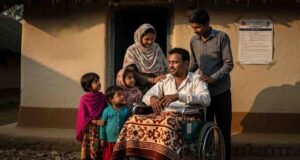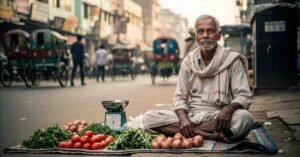Table of Contents
- The Challenge: A Crisis Within a Crisis
- Phase 1: The Emergency Response – Our Initial COVID-19 Relief Case Study
- Phase 2: The Strategic Pivot – Scaling Our COVID-19 Relief Case Study
- The Results: Quantifying the Impact of our COVID-19 Relief Case Study
- Lessons Learned from Our COVID-19 Relief Case Study
- How Your Partnership Fuels Future Crisis Response
When the COVID-19 lockdown brought India to a standstill, a silent crisis emerged. Millions of daily wage earners and their families were left without food or income. The very systems we relied on were strained. At Reshine Org, our mission to fight hunger suddenly became a race against time. This COVID-19 relief case study details how we adapted our core model to meet an unprecedented challenge, scaling our operations to serve over 1.2 million meals to those most affected.
For CSR managers and business leaders, this COVID-19 relief case study is more than a story; it’s a blueprint for effective crisis intervention. It demonstrates how an agile, transparent, and partnership-driven approach can create monumental impact when it matters most. We share this not to boast, but to provide a transparent account of our strategy, the challenges we faced, and the life-saving results achieved with the support of our partners.
This detailed COVID-19 relief case study will walk you through the three critical phases of our response: the immediate emergency feeding, the strategic shift to family nutrition kits, and the lasting partnerships forged in crisis.
The Challenge: A Crisis Within a Crisis
Our initial challenge was twofold: a catastrophic rise in need and a breakdown in traditional supply chains. This COVID-19 relief case study begins with understanding the landscape we faced.
- Skyrocketing Demand: Overnight, the number of people facing acute hunger in our communities multiplied. The people we served were no longer just the chronicly hungry, but also newly vulnerable families.
- Broken Supply Chains: Our primary model—redistributing surplus from events and businesses—collapsed as hotels, caterers, and offices shut down.
- Logistical Nightmares: Strict lockdowns and movement restrictions made transportation and distribution incredibly difficult and risky for our volunteers.
- Safety Protocols: Ensuring the safety of our beneficiaries, volunteers, and partner networks from virus transmission became our top priority.
This COVID-19 relief case study shows that our existing model was insufficient. We needed a new playbook, and we needed it fast.
Phase 1: The Emergency Response – Our Initial COVID-19 Relief Case Study
Our first priority was immediate action. We couldn’t wait for a perfect plan. This section of our COVID-19 relief case study covers the critical first 30 days.
Mobilizing a Rapid Response Network
We immediately pivoted from collecting surplus to sourcing and preparing meals. Our actions included:
- Establishing Community Kitchens: We partnered with trusted local restaurants and community centers with existing kitchens to start preparing fresh, hygienic meals.
- Implementing Strict Safety Protocols: Every volunteer was trained in COVID-19 safety. We mandated masks, gloves, sanitizers, and thermal checks at all distribution points.
- Launching a Digital Helpline: We set up a helpline for individuals and community leaders to request food support, allowing us to identify and map hunger hotspots effectively.
Key Outcomes of the Emergency Phase
The results from this initial stage of our COVID-19 relief case study were a testament to collective effort:
- 150,000+ meals served in the first 30 days.
- 25+ distribution hubs established across the city.
- Zero reported COVID-19 transmissions within our volunteer or beneficiary network due to our protocols.
Phase 2: The Strategic Pivot – Scaling Our COVID-19 Relief Case Study
While providing cooked meals was essential, we knew it wasn’t a sustainable long-term solution for families in lockdown. This led to the most significant strategic shift documented in this COVID-19 relief case study.
Shifting to Family Nutrition Kits
We transitioned from serving individual meals to providing weekly Family Nutrition Kits. This decision was crucial for our COVID-19 relief case study success.
Each kit was designed to provide a family of four with a week’s worth of nutritious, non-perishable food, including:
- Staples like rice, wheat flour, and lentils.
- Pulses and spices.
- Cooking oil and sugar.
- Soybean or other protein-rich alternatives.
The advantages of this model were clear:
- Dignity and Empowerment: Families could cook their own meals according to their preferences and schedules.
- Reduced Footfall: Distributing weekly kits meant fewer crowds at distribution points, enhancing safety.
- Economic Efficiency: Bulk purchasing and packing allowed us to stretch every rupee further.
Building a Resilient Supply Chain for this COVID-19 Relief Case Study
To make the kits possible, we had to rebuild our supply chain from the ground up. This part of our COVID-19 relief case study highlights our operational backbone.
- Forging New Partnerships: We partnered directly with farmers’ cooperatives and wholesale distributors to source high-quality ingredients at scale.
- Centralized Packing: We set up a central, sanitized warehouse where volunteers could safely assemble thousands of kits while maintaining social distancing.
- Tech-Enabled Distribution: We used simple GPS and route-planning apps to optimize delivery routes to slums, migrant camps, and orphanages, ensuring no community was missed.
The Results: Quantifying the Impact of our COVID-19 Relief Case Study
The success of any initiative is in its measurable outcomes. The data from this COVID-19 relief case study speaks for itself.
Between March 2020 and December 2021, our COVID-19 relief efforts resulted in:
- 1,200,000+ meals and nutrition kits distributed.
- Over 45,000 individuals supported directly.
- 12,500+ families received weekly nutrition kits for sustained periods.
- 28 partner organizations collaborated with us, from local community groups to large corporations.
A testimonial from a community leader in a major settlement:
“When the lockdown was announced, panic set in. We had no work and no food. Reshine Org didn’t just bring us food; they brought us hope. Their weekly kits meant our children did not go to bed hungry. Their system was organized and, most importantly, safe.”
Lessons Learned from Our COVID-19 Relief Case Study
This COVID-19 relief case study provided invaluable insights that have now been integrated into our ongoing operations.
Key takeaways from our COVID-19 relief case study include:
- Agility is Everything: The ability to pivot quickly from a surplus model to a sourcing and distribution model was the key to our survival and impact.
- Partnerships Multiply Impact: We could not have done this alone. Corporate donors provided crucial funding, while local NGOs provided on-ground intelligence and support.
- Dignity is Non-Negotiable: Transitioning to family nutrition kits was not just a logistical decision; it was a humanitarian one that respected the dignity of those we served.
- Transparency Builds Trust: We provided regular, detailed updates to our donors with photos and data, which built incredible trust and encouraged continued support.
How Your Partnership Fuels Future Crisis Response
This COVID-19 relief case study proves that with the right systems and partners, we can face any challenge. The networks and processes we built during the pandemic have made us stronger and more resilient. Today, we are better prepared for future emergencies, whether they are natural disasters or economic downturns.
By partnering with Reshine Org, you are not just funding a meal; you are investing in a proven, agile response system. You are ensuring that when the next crisis hits, we can act immediately, effectively, and with compassion.
Be Ready to Make a Difference Before the Next Crisis Hits
The lessons from our COVID-19 relief case study are clear: preparedness saves lives. Don’t wait for the next emergency to build a partnership.
Join us in building a resilient and hunger-free future.
[Become a Resilience Partner] today. Let’s work together to create a custom CSR plan that prepares your company to make a decisive impact when it’s needed most.
Want to see the full data and stories?
[Request Our Complete COVID-19 Impact Report] for an in-depth look at the numbers, personal stories, and the strategic framework that guided our success. Let’s turn your compassion into ready-for-anything action.
